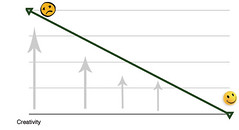Why do leaders seek coaching? Over the past twenty years of coaching, I have found that leaders seek to a coach for six main reasons, and more urgently when two or more of these reasons combine:
So just what can a coach do for you?
- Gain insight – particularly about how current behaviour is PERCEIVED by others through providing feedback and assessment.
- Get Clarity of Purpose – Extroverted people who are outer directed (and rewarded behaviours in this world) tend to get their self-esteem from satisfying others’ expectations of them. This may cause them to lose touch with what is truly important for themselves. Without clarity of purpose, you may tend to rush through days not knowing what you want to achieve. Often asking what others want rather than seeming to have opinions of their own. Reflection and review through coaching can help here.
- Help you improve relationships – changing behaviours in relationships changes their perception of the other party and you’ll get more open and honest feedback. Coaching that helps you conduct planned conversations with colleagues is especially useful here.
- Broaden your perspectives – we all play a role and have a preference of the way we process…. increasing the diversity of opinions we consider in decisions broadens our perspective leading to improved and more acceptable decisions.
- Develop your leadership skills – developing the skills each individual needs for their new position or a future role.
- Help you Identify and overcome barriers to change – change occurs over time, unlearning is often resisted, especially deeply rooted habits, and stress causes us to revert to preference. Self-righteousness is often the biggest barrier. Coaching can identify and discuss the roadblocks developing strategies and new ways of thinking to overcome them.
- Improve your ability to learn – dependence on your coach for feedback is a disservice. Internalizing the ability to learn and continuously grow, sustaining behaviour and results. Coaching uses a cyclical process, making this process explicit, the coachee becomes more skilled at using the same process on their own.
When is Coaching needed?
According to a report published by CIPD (Chartered Institute of Personnel Development), one in five chief executives claim that having had a coach was critical for their success.
- Starting in a new job/position when you are expected to hit the ground running.
- Taking on a new role or responsibility, or starting in a new industry where you have little experience, but need to gain the skills and experience quickly.
- When needing a personal assessment to determine your strengths and weaknesses, and consider what you should be doing in order to maximize your potential.
- When striving for promotion or a new position.
- When needing to talk through your thought processes, strategies, and plans in order to move forward.
- When struggling with certain skills and performance areas and you wish to improve.
- When feeling you have reached a plateau in your career and want to explore options.
Related articles


























